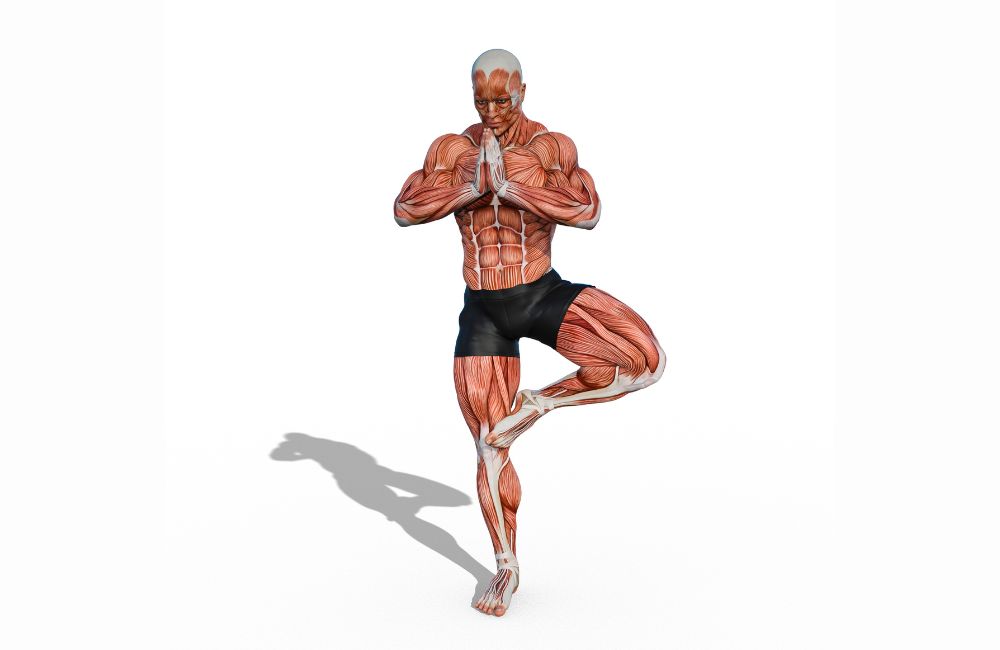
Unfortunately, many men shy away from yoga. In large part, this is due to the incorrect perception that yoga is only suitable for women.
In actuality, yoga is a great way for everyone, regardless of age or gender, to decrease mental and physical stress. At the same time, yoga can help to improve strength, flexibility, and many other areas of fitness.
This post will serve as an introductory guide to some of the most effective yoga poses for men. If you’re new to the practice, this post can help you on your way toward achieving better health and fitness through weekly yoga practice.
8 Best Yoga Poses for Men
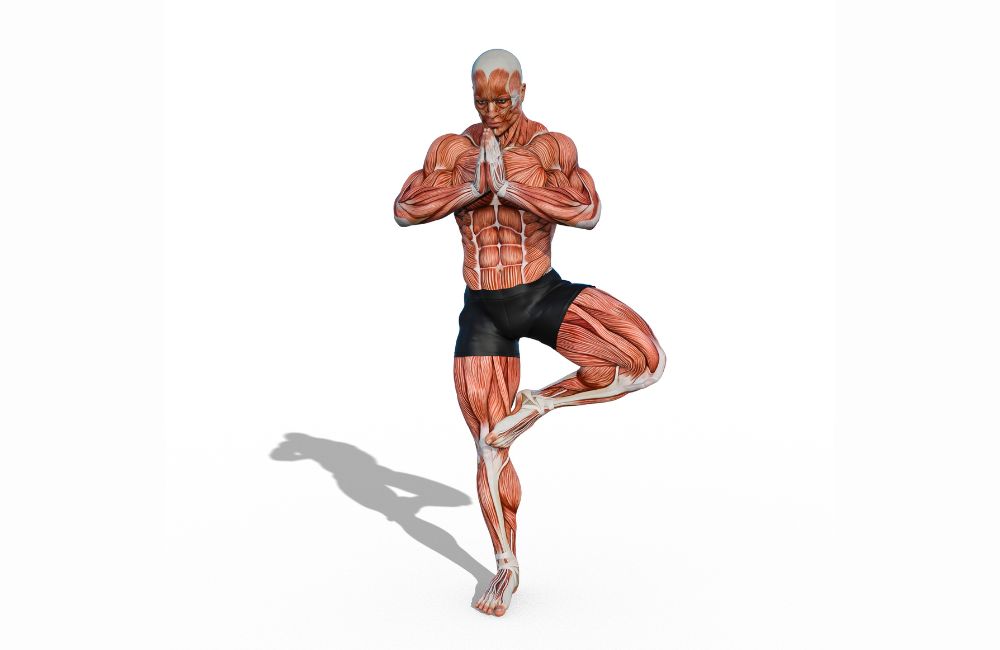
Now, without further preamble, let’s dive into 8 of the best yoga poses for men!
1. Child’s Pose
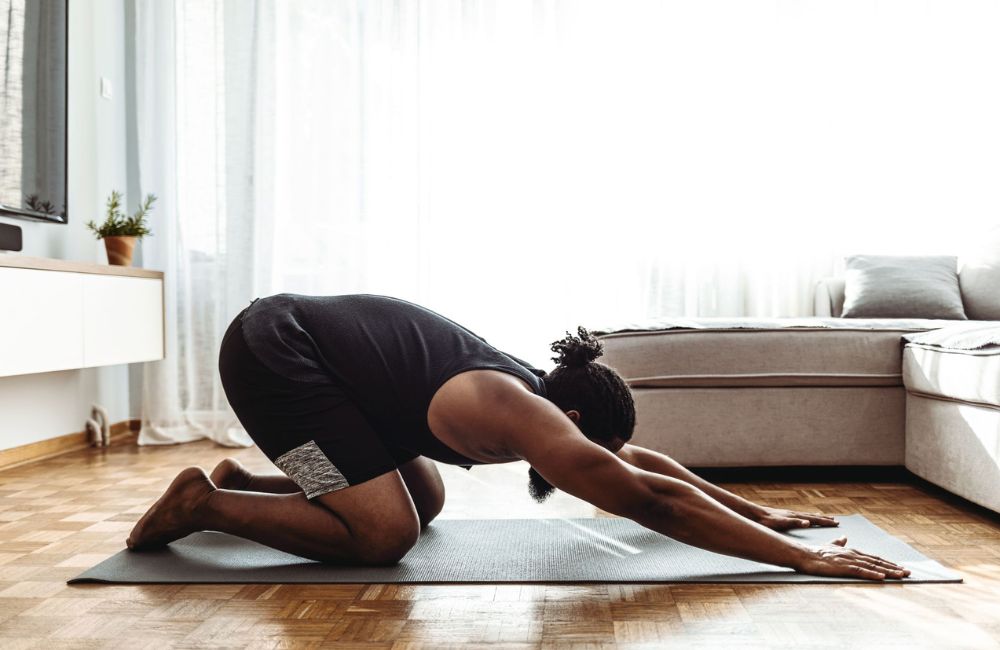
Child’s pose is a part of nearly every yoga session. It is often used as a “home base” where practitioners can return if they are worn out or uncomfortable with a certain pose. Also, it can significantly help to improve back and shoulder flexibility.
How to Perform
- Start on your hands and knees.
- Next, shift your weight backward so that your buttocks rest on your heels.
- At the same time, inch your hands forward as far as you can.
- By doing so, you’ll essentially be imparting a “traction” force through your spine.
- Hold this stretch for 10-15 deep breaths, or 30 seconds and repeat 4 times per session.
2. Cat-Camel
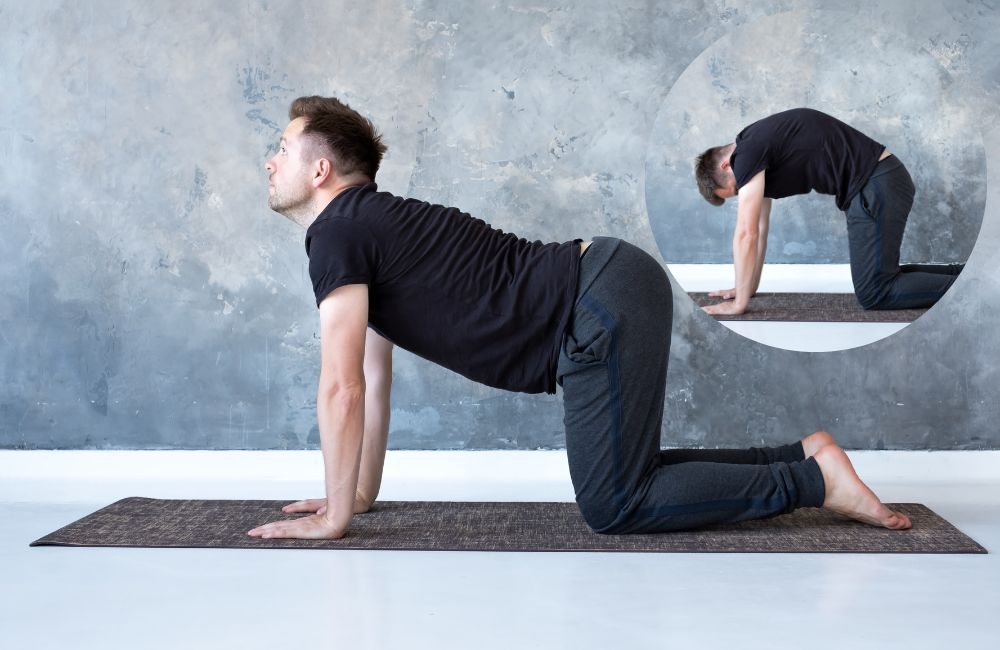
Cat-camel, also known as cat-cow, is another yoga staple. This move is an excellent choice for those who sit a lot, as it provides an active massage for the upper portion of the spine.
How to Perform:
- Place your hands on the ground, directly beneath your shoulders.
- At the same time, place your knees on the ground, directly beneath your hips.
- Next, allow your stomach to drop toward the floor as you simultaneously lift your head up, looking forward.
- Hold this position for 5 deep breaths, or 15 seconds.
- Then, reverse the motion by lifting the middle of your back up towards the ceiling while simultaneously tucking your chin to your chest.
- Hold this position for 5 deep breaths, or 15 seconds.
- Continue to alternate between these positions 10 times per session.
3. Thread the Needle
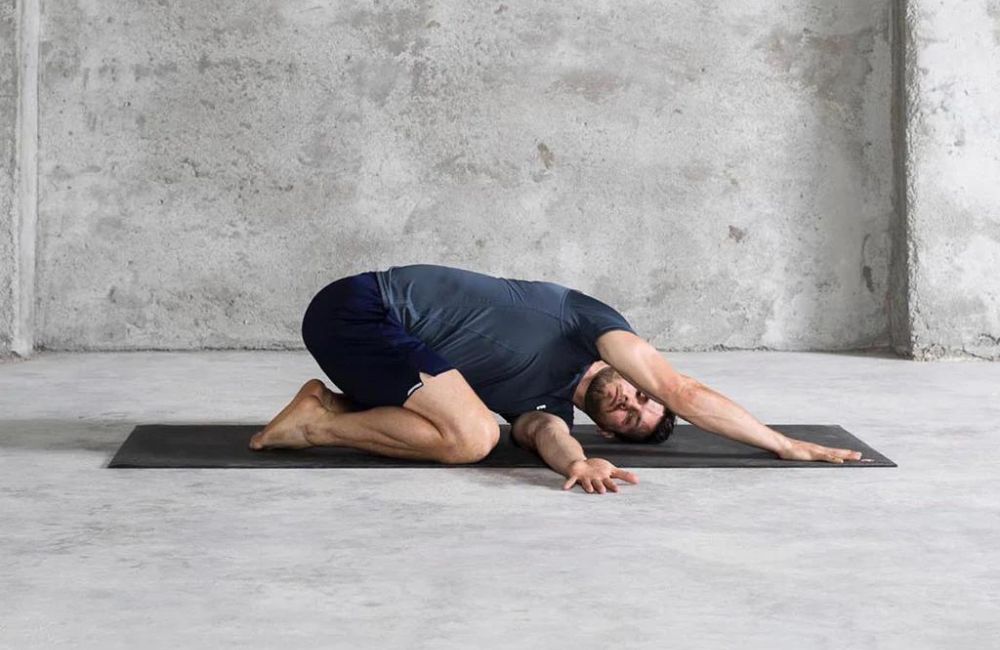
The shoulders and upper back can often tighten up in response to our daily lives. Sitting and slouching can lead to stiffness in these areas. Luckily, a stretch such as threading the needle can counteract many of the effects of slouching!
How to Perform:
- Start on your hands and knees, with your back flat and strong.
- Next, reach your right arm underneath your chest toward the left side of the room.
- If possible, rest your head and right shoulder on the ground as you hold this stretch for 30 seconds.
- Then, switch sides, holding for 30 seconds on the left side.
- Complete 5 reps per side, per session.
4. Table-Top Stretch
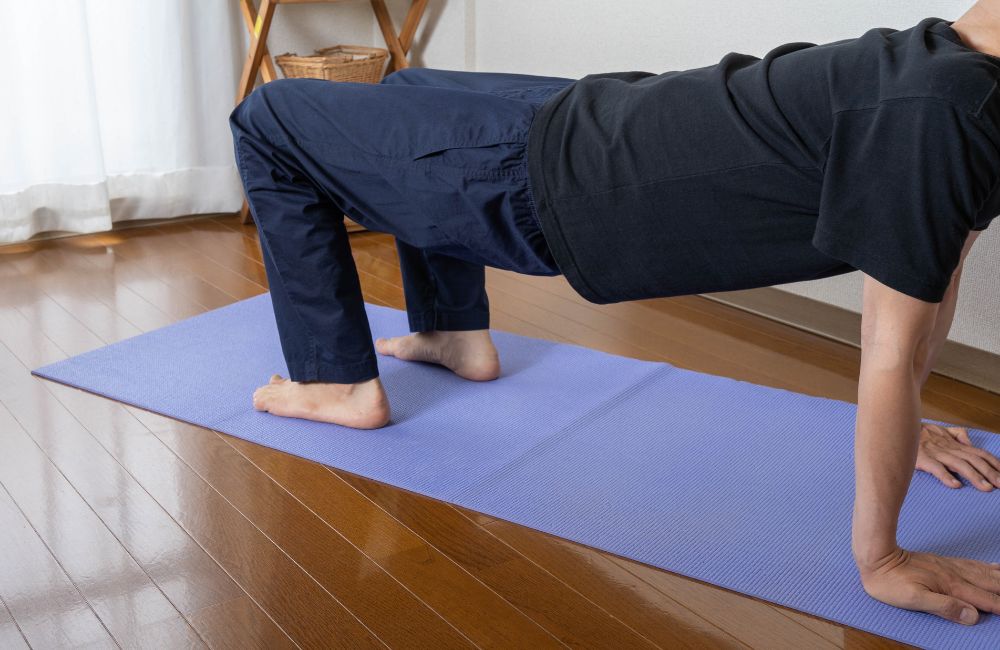
Of the stretches discussed thus far, this is likely the most advanced one. The table-top stretch places a lot of emphasis on the shoulders, wrists, and other areas of the body. However, once you’re ready for it, it’s a terrific total body stretching move that complements many other types of exercise.
How to Perform:
- Sit on the ground, with your hands and feet flat on the floor.
- Next, push your hips up toward the ceiling until your back is parallel to the floor.
- Hold this position for 30 seconds, then slowly return to the ground. Complete 4 reps per session.
5. Full-Depth Squats
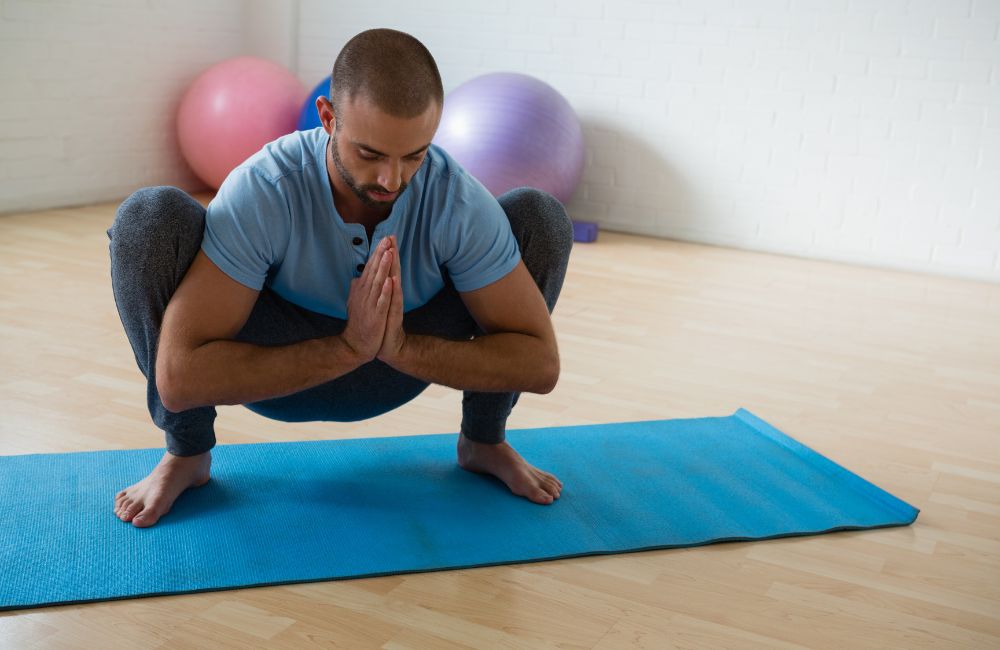
Squats are likely the most functional exercise we can perform. We use a squatting motion when we stand up from a chair when we sit down, and in many other situations throughout our daily lives.
Working on the deeper ranges of the squat can help to loosen up stubborn tissues that stay tight no matter what we do.
How to Perform:
- Stand with your feet spaced roughly hip-width apart.
- Slowly, squat down as low as you can by bending your knees and sitting your hips backward.
- Once you’ve reached the bottom of your range, hold the stretch for 30 seconds. Repeat 5 times per session.
6. Gate Pose (Parighasana (par-ee-GAHS-ah-nah))
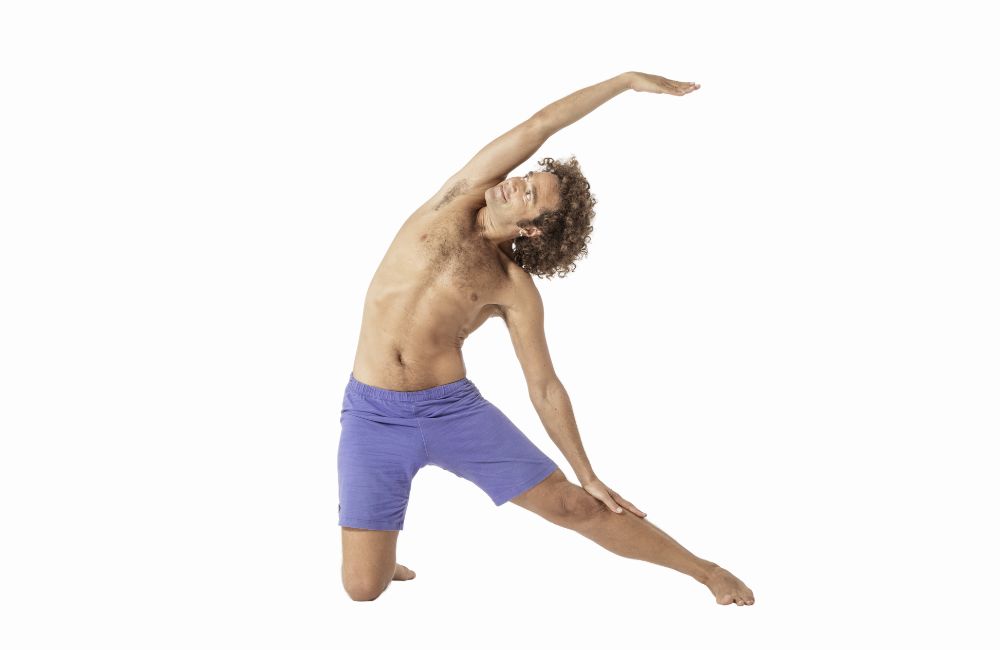
This pose emphasizes the muscles situated on the sides of the trunk. By keeping these tissues loose and flexible, you can prevent many different types of back pain.
How to Perform:
- Start kneeling.
- Then, kick your right leg straight out to the side, keeping most of your weight on your left knee.
- Slowly ease into the stretch by shifting your right leg out further to the side and by shifting your weight further in that direction as well.
- Then, reach your right hand to the ground as you reach your left hand toward the ceiling.
- Hold this position for 30 seconds and repeat 4 times on each side per session.
7. Prone Scorpion Stretch
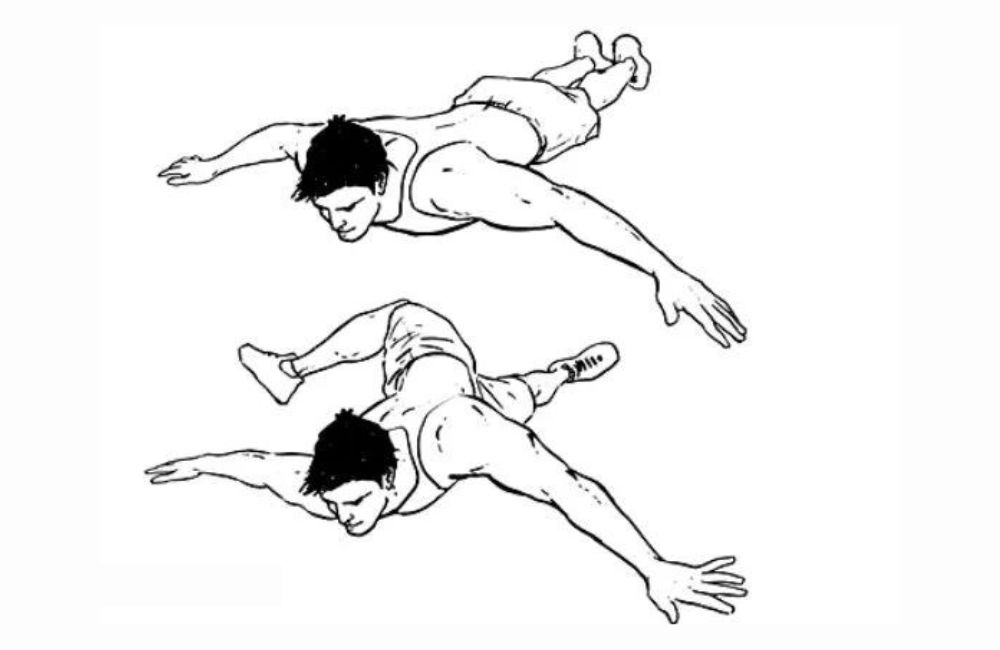
The scorpion pose is a great option for athletes who are looking for ways to improve their hip and low back mobility. However, you should proceed with caution before trying this stretch, as it can put a ton of strain on the spine if you aren’t warmed up or mobile enough when you first perform it.
How to Perform:
- Lie on your stomach with your arms straight out to the sides.
- Next, lift your left leg off of the ground, keeping your left knee bent.
- Open up your hips as far as you can to the left as you aim to place your left foot on the ground on the outside of your right hip.
- Hold this stretch for 3 breaths, then switch sides. Perform 10 reps per session.
8. Seated Lumbar Rotation Stretch
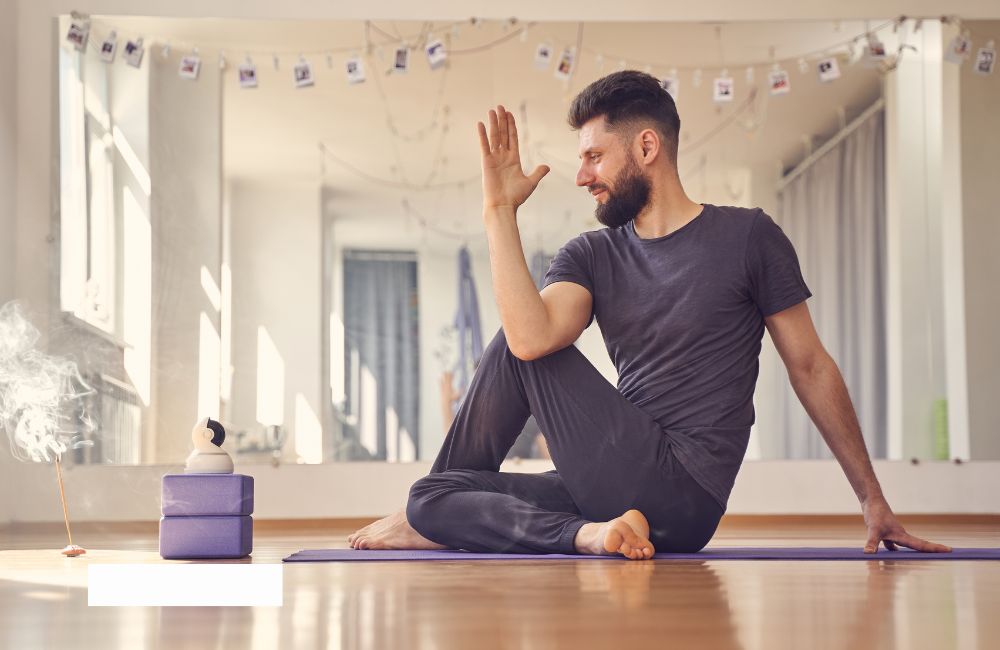
When you perform this stretch, you’re likely to get a few good cracks in your back. While this may be alarming, this isn’t usually a concern. However, if you have pain while performing this stretch, or any of the others, be sure to follow up with an appropriate medical provider.
How to Perform:
- Start in a seated position, with your left leg out straight in front of you and your right leg crossed over your left, right foot flat on the floor.
- Turn your trunk to the right and place your left elbow on the outside of your right thigh.
- Use your left elbow to push yourself further into the stretch and hold for 30 seconds, repeating 4 times on each side per session.
Conclusion
Yoga is an amazing form of exercise for both the mind and body. By performing this simple routine, outlined above, a few times a week, you’ll be well on your way to increasing your flexibility and improving your overall health.
Try these stretches out today and see what you think!
Works Cited
- Bridges L, Sharma M. The Efficacy of Yoga as a Form of Treatment for Depression. Journal of Evidence-Based Complementary & Alternative Medicine. 2017;22(4):1017-1028. doi:10.1177/2156587217715927
- Chang, D. G., Holt, J. A., Sklar, M., & Groessl, E. J. (2016). Yoga as a treatment for chronic low back pain: A systematic review of the literature. Journal of orthopedics & rheumatology, 3(1), 1–8.


